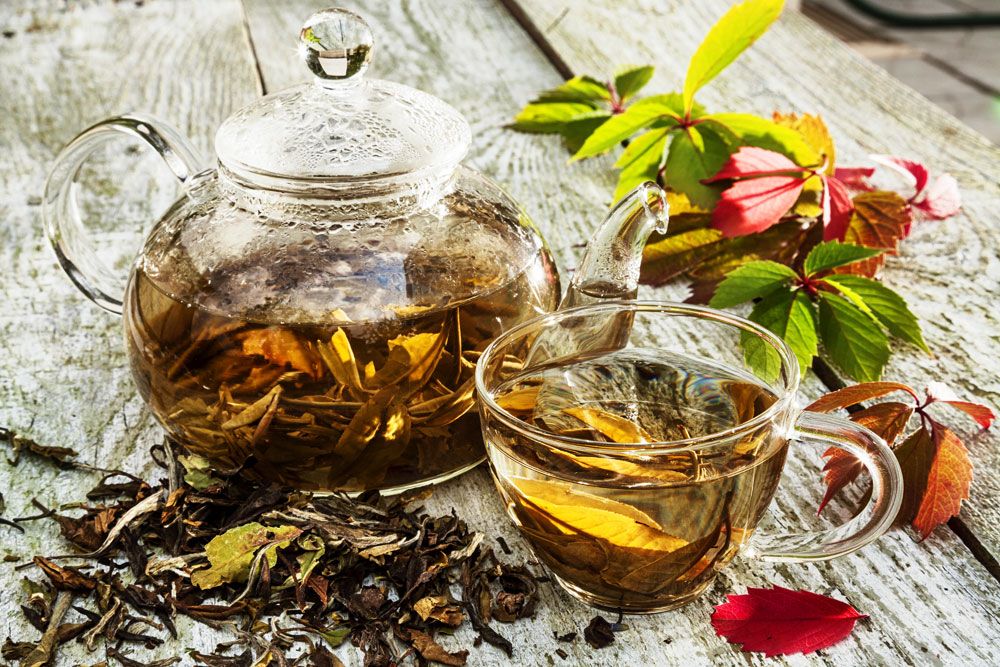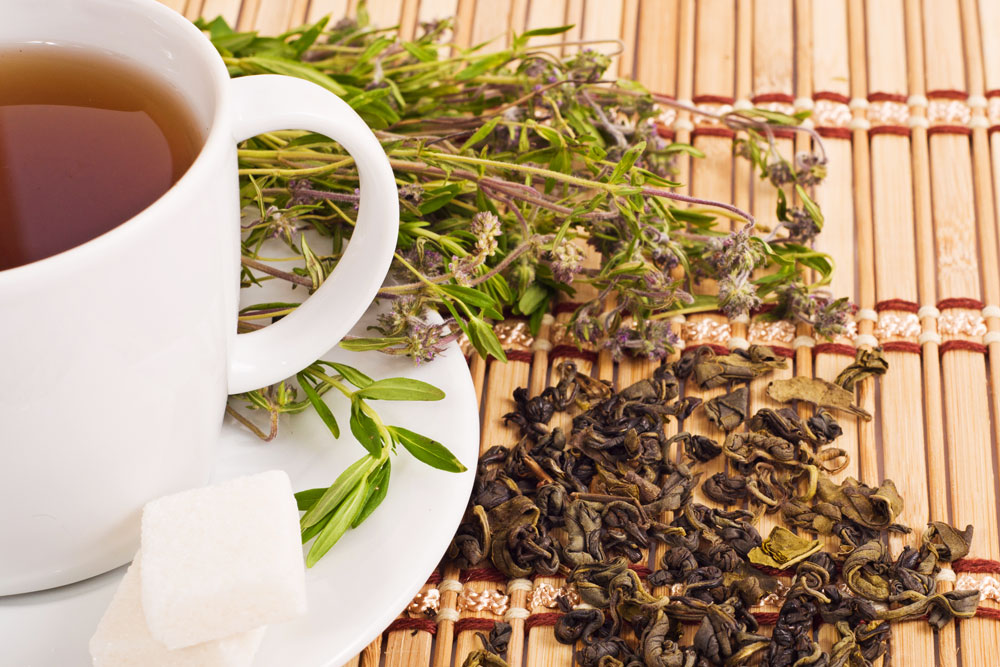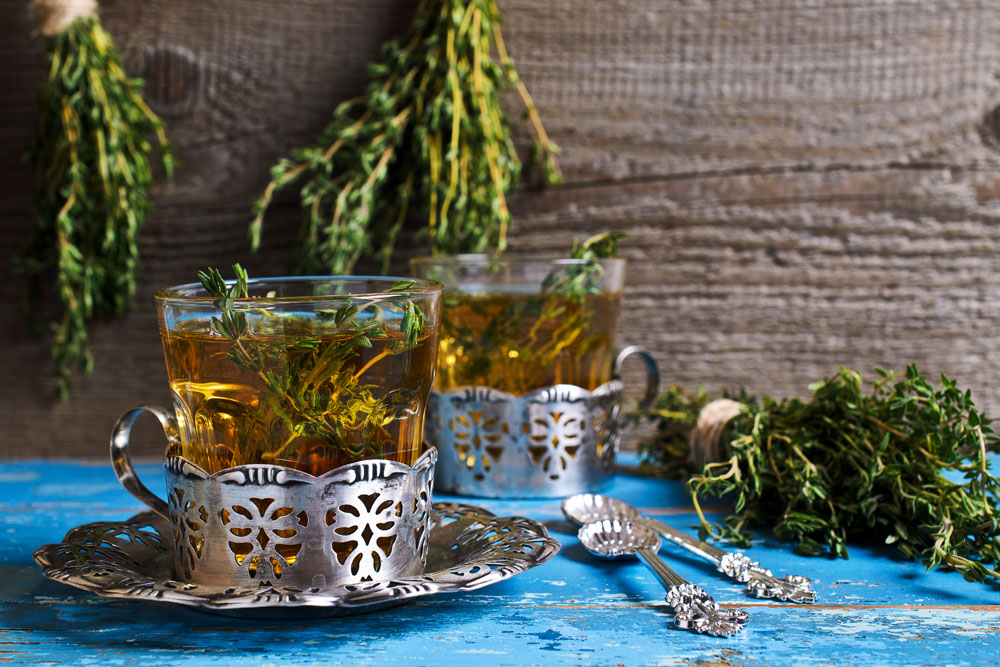
Siberians add plenty of herbs to their tea.
Shutterstock / Legion-MediaI pour some tiny violet flowers of thyme in a glass teapot, I add dried leaves of melis and currant and then I add a pair of leaves of a high-mountain rhododendron plant known as sagaan dali. I watch the flowers and leaves slowly unfurling in the boiling-hot water with the water becoming a pleasant grassy color. In five minutes the kitchen is filled with gentle but distinctive smells of taiga, mountains and ripening wild berries, the aromas of Siberia.
From the earliest times it was common in Russia to drink tea through pieces of sugar (vprikusku). The vprikusku ritual involved chipping small pieces of sugar from a bigger lump, then the drinkers would put a small piece of sugar between their front teeth and sip hot tea through it, which is how the drink acquired its sweet taste. Igor Shein, a researcher of Siberian cuisine, says that one wouldn't be able to do this using a cube of refined sugar today because it has a different consistency.

"Vprikusku" or "s prikuskoi", this tea is sweet anyway. Source: Alamy / Legion-MediaIn the past Siberians used to drink tea vprikusku, but there was another local variation of this word: “s prikuskoi” (meaning “with something to eat”). “The Memories of Siberian Life” published in 1895 says, “The host asked us if we drink tea ‘s prikuskoi’… It turned out that drinking tea ‘s prikuskoi’ means eating sweet pie, pastry or cake baked at home to go with tea. In Siberia it meant drinking tea with curd tarts, jam, and biscuits.”
Tea has always been a very important drink in our land – for peasants, merchants and noblemen. At the beginning of the 20th century, the governor of the Tomsk region ordered the abolition of taxes on discretionary goods including tea. In contemporary Siberiasipping tea through a piece of sugar is most common for elderly people. But serving pastries is still a necessary element of the tea drinking ritual and you can easily see it for yourself when dropping by any Siberian home.
 Some Siberian herbs have a toning and energizing effect, some help to calm down and relax. Source: Shutterstock / Legion-MediaHerbal teas are beloved in Siberia most of all. When your average Siberian is going to have a picnic, they will most likely take a thermos bottle not with a standard black tea bag inside, but a drink made from a mixture of wild herbs. If you drink a cup of such tea at work, in the office, you will feel like you have just been on a walk through a forest in summer. Siberians add plenty of herbs to their tea.
Some Siberian herbs have a toning and energizing effect, some help to calm down and relax. Source: Shutterstock / Legion-MediaHerbal teas are beloved in Siberia most of all. When your average Siberian is going to have a picnic, they will most likely take a thermos bottle not with a standard black tea bag inside, but a drink made from a mixture of wild herbs. If you drink a cup of such tea at work, in the office, you will feel like you have just been on a walk through a forest in summer. Siberians add plenty of herbs to their tea.
In the mornings, instead of a usual cup of coffee I drink black tea with several leaves of sagaan dali – a bushy rhododendron plant that grows high in the Sayan Mountains, Tibet and the foothills of Buryatia and has a toning and energizing effect. Tibetans used to say that sagaan dali leaves were “the herb that extends life.”
In order to achieve the opposite effect and calm down, relax and fall asleep, Siberians brew thyme, melis, leaves of currant and origanum. Herbal tea is drunk in Siberia with honey, lindenberries, cherry-tree pie and cedar seeds. If you are lucky, in a Siberian home you will get to taste a hardy, yet aromatic fir-tree drink. The popularity of Siberian herbal teas is gradually spreading throughout Russia, far beyond their place of origin.
All rights reserved by Rossiyskaya Gazeta.
Subscribe
to our newsletter!
Get the week's best stories straight to your inbox